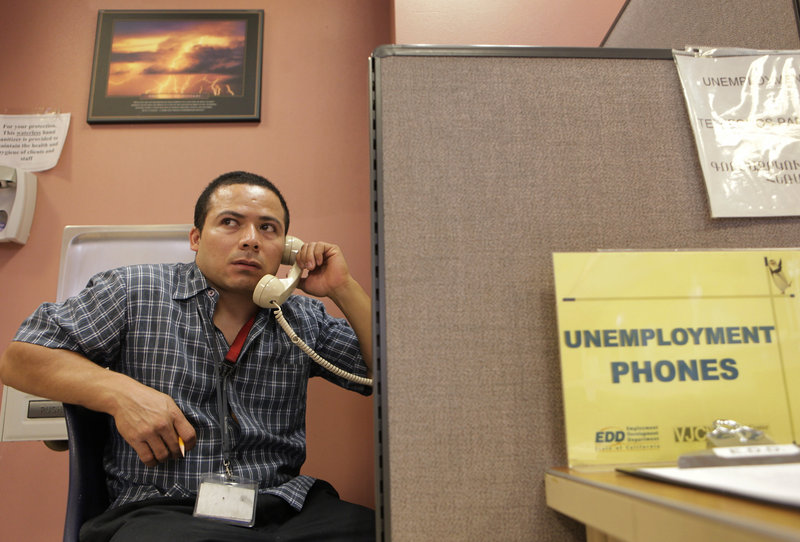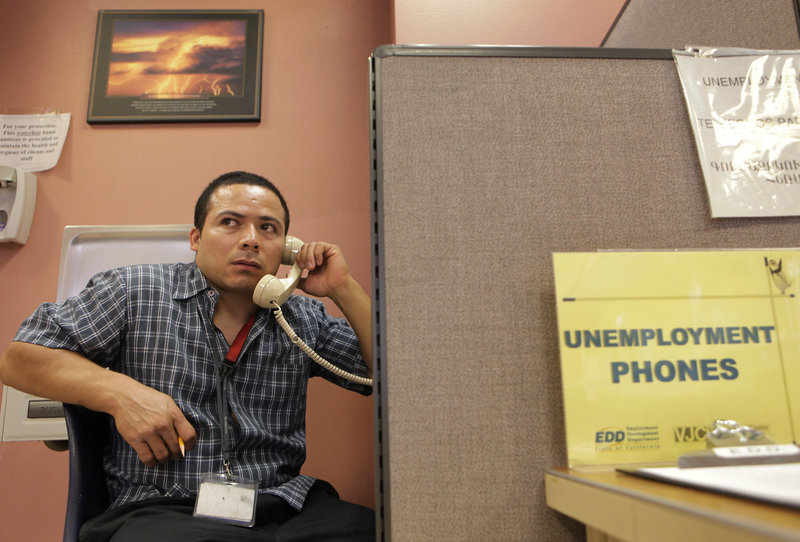WASHINGTON – Layoffs are back, and that’s bad news for the fragile economic recovery.
New applications for unemployment benefits hit a nine-month high last week, a spike that suggests private employers may shed jobs this month overall for the first time this year.
Workers are losing construction jobs in Georgia and manufacturing jobs in Indiana. Some of the layoffs are coming as stimulus money dries up and public works projects come to a halt. Government employees are being let go, too, as states and cities grapple with budget crises.
Without more jobs, consumers will not feel secure enough to spend much money, further slowing the economy. The grim outlook has economists lowering their estimates for growth in the second half of the year. And on Thursday there was a sell-off on Wall Street led by investors worried that the United States could tumble back into recession.
“Today’s news on the economy has been nothing but awful,” Paul Ashworth, an economist at Capital Economics, wrote in a note to clients. “The recovery is clearly slowing.”
The Labor Department said Thursday that initial claims for jobless benefits rose by 12,000 last week to 500,000 — the highest level since November and the third straight increase.
As the economy recovered from the worst downturn since the 1930s, initial jobless claims declined steadily from a peak of 651,000 in March 2009 to a low of 427,000 in July before rising steadily over the past six weeks. In a healthy economy, jobless claims usually drop below 400,000.
Robert Dye, senior economist at the PNC Financial Services Group, said claims showed a similar pattern in the last two recoveries, but eventually began to fall again. The current elevated level of claims is a sign that employers are reluctant to hire until the rebound is well under way. That’s what happened after the 1991 and 2001 recessions, which were dubbed “jobless recoveries.”
Economists caution that more than 350,000 temporary census jobs ended in recent months, and those workers could be applying for benefits. Congress also recently restored an extended unemployment benefits program, which can sometimes spike claims.
The jobless report and a separate report showing that manufacturing activity in the mid-Atlantic region declined in August sent stock markets tumbling. The Dow Jones industrial average closed down 144 points for the day. Interest rates dropped sharply as investors flocked to the safety of Treasury bonds.
A rush to move money into Treasurys in recent months has sent mortgage rates to the lowest level in decades. They dipped for the eighth time in nine weeks.
Also Thursday, the Congressional Budget Office said the deficit is on pace to exceed $1.3 trillion for the budget year that ends in September. That would be the second-largest ever, just below the record of more than $1.4 trillion in the last fiscal year.
Partially fueling the deficit was hundreds of billions of dollars in stimulus spending. But many of the programs are now ending, taking jobs with them.
Construction firms are letting go of more workers as the housing sector slumps and federal stimulus spending on public works projects winds down.
In Washington, Republicans have made Democrats’ handling of the economy the No. 1 campaign issue heading into the midterm congressional elections. President Obama cited the jump in jobless claims to call attention to Republicans who are opposing his proposal to help small businesses.
That bill would provide up to $30 billion in additional lending to small businesses and about $12 billion in tax breaks to encourage hiring.
But Republicans and some Democrats are balking at more spending because of the effect on the deficit.
The nationwide increase in unemployment claims suggests the economy is creating even fewer jobs than in the first half of this year, when private employers added an average of about 100,000 per month. That’s barely enough to keep the unemployment rate from rising. The jobless rate has been stuck at 9.5 percent for two months.
Private employers added only 71,000 jobs in July. But that increase was offset by the loss of 202,000 government jobs, including 143,000 temporary census positions.
July marked the third straight month that the private sector hired cautiously, and economists are concerned that the unemployment rate will start rising again becauseeconomic growth has weakened significantly since the start of the year.
After expanding at a 3.7 percent annual rate in the first quarter, the economy’s growth slowed to 2.4 percent in the April-to-June period. Some economists forecast it will drop as low as 1.5 percent in the third quarter.
Copy the Story Link
Send questions/comments to the editors.




Success. Please wait for the page to reload. If the page does not reload within 5 seconds, please refresh the page.
Enter your email and password to access comments.
Hi, to comment on stories you must . This profile is in addition to your subscription and website login.
Already have a commenting profile? .
Invalid username/password.
Please check your email to confirm and complete your registration.
Only subscribers are eligible to post comments. Please subscribe or login first for digital access. Here’s why.
Use the form below to reset your password. When you've submitted your account email, we will send an email with a reset code.